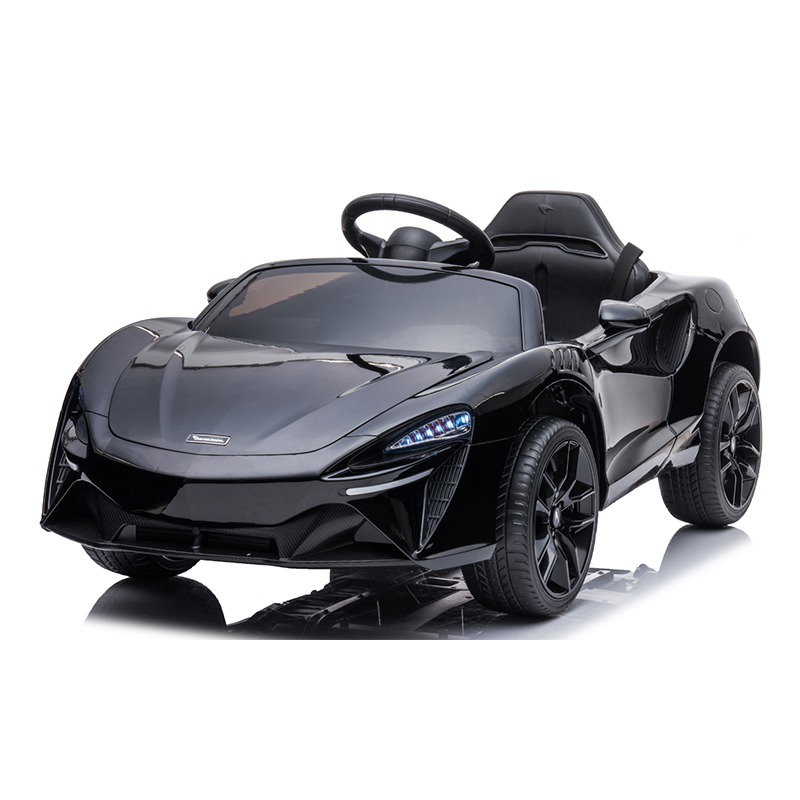What Information Do I Need To Know About Battery Life & Charging Time For An Electric Ride-On Kid's Car?
Understanding the battery's lifespan and charging time of an electric ride-on children car is vital to ensuring uninterrupted playtime and optimal performance. What you need to understand is the type of battery.
Most electric rides-on cars are rechargeable and use either led-acid or lithium-ion batteries. Lead-acid batteries are slower to charge and have a shorter battery life.
Battery Capacity
The battery capacity is expressed in ampere hours (Ah) and Watt hours (Wh). This determines the amount of time the ride-on will last on one charge. High capacity batteries allow for longer playtime, without needing recharge.
Run Time -
This is the length of time that an electric ride-on will run for following a single charge. This is contingent on a range of factors such as the battery, the motor as well as the terrain and the weight of the rider.
The average run time of electric ride-ons varies between 30 to 2 hours. Nevertheless, high-capacity lithium batteries will provide longer running time.
Time to Charge -
The charging time refers how long it will take to fully recharge a depleted battery. Charge time may vary based upon the battery's capacity, specifications for the charger and the charging method.
The typical charging time for electric ride-on vehicles is 8-12 hours. Certain models could offer quicker charging times, particularly using lithium-ion batteries.
It's crucial to follow the recommendations of the manufacturer for charging to ensure the security and longevity of the battery. Battery performance can be adversely affected if the battery has been either overcharged or undercharged.
Charge Method -
Chargers that charge electric rides are typically plugged into standard household outlets. Certain models come with fast-charging capacities, or come with a charger that changes the rate of charging depending on the battery's condition.
To avoid any harm to the electrical system or battery make sure that the charger and port are compatible with chargers provided by your ride-on vehicle.
Additional Batteries
Certain electric vehicles provide the option of buying additional batteries or extra batteries to increase the duration of play. With extra batteries in stock it is possible to swap the depleted battery for an fully charged battery to reduce downtime.
When you understand the battery's time and charge times of an electric ride-on kids' car it is possible to ensure that your kids will enjoy fun and uninterrupted playtime while exploring their surroundings. The battery performance and life can be extended by regularly charging the batteries and following proper charging procedures. View the most popular McLaren kids car for website recommendations including toy ride, lambo toy car, race car toy car, race car toy, electric ride on, ride on car, remote control childrens electric cars, electric car ride, electric ride on cars, remote control childrens electric cars and more. .

What Are The Features Available On The Ride-On Cars?
There are a variety of features that come with ride-on cars. They come with accessories and features that make the experience more engaging and realistic for kids. Here are a few common features and accessories that are available on ride-on vehicles: Working Headlights -
The majority of ride-on vehicles have functioning headlights that highlight the roadway improving visibility, especially in dark areas or evening driving.
Horn Sounds -
Ride-on cars usually have an horn button, or a steering wheel that emits sounds of horn when it's pressed. It allows children to let others know they're there and pretend they're driving a real car.
MP3 Player Compatible MP3 Player Compatibility
Some ride-on cars are compatible with MP3 players, allowing kids to connect their devices through USB or auxiliary input. The ride-on cars can be enhanced by listening to the children's most loved songs.
Realistic Engine Noises -
Sound effects can be added to ride-on cars that mimic realistic engine sounds, revving noises or acceleration sounds. This enhances the driving experience for children and allows them to feel like they're driving a real car.
Remote Control
Some ride-on cars have the ability for parents to use a controller, which lets parents supervise and control their child's vehicle from a distance. Parents can steer their ride-on car, control its speed or even stop it by remote. This lets them feel safe and secure.
Seat Belts -
Most ride-ons have safety harnesses and seat belts that help keep children safe inside the vehicle. This provides an extra layer of protection and helps to prevent them from falling when playing.
Working Doors
A number of ride-on vehicles have doors that can be closed and opened. This makes it easy for children to enter the car and exit, and enhances the experience of driving.
Storage Compartment
Certain ride-ons have a compartment or trunk that allows children to store their toys, snacks, and other items. This feature is practical and flexibility.
Adjustable Seats -
Some ride-ons have seats that can be adjusted. They can move forward or rearward to accommodate children at different sizes. Other models offer additional space for growing children.
Remote Emergency Stop Button
Some ride-ons include an emergency button that can be activated remotely for stopping, allowing parents to quickly stop the car in case there is an emergency or if the vehicle is in a dangerous situation.
Features and accessories for cars that can be mounted on the ride help to ensure safety and fun. This allows children to enjoy imaginative play while driving their own vehicle. See the recommended read more for ride on toys for website tips including digger ride, 2 seater electric cars, ride on toy, electric ride along car, kidscars, childs electric ride on car, car toy toy, kidscars, childs ride on car, childs ride on car and more. .

What Kind Of Children's Remote Control Cars Are Available? What Are The Pros And Cons Of These Vehicles?
Remote control cars for kids are also known as RCs or remote controlled cars. They come in a range of styles, price points and sizes that will suit every budget and preference. This article will provide a summary of the pros and cons, and the sizes of remote controlled children's car types.
Electric RC Cars – Batterie-powered remote-controlled cars that are suitable both indoors and out. They are available in various designs, including trucks or buggies.
Nitro RC Cars – Gas powered remote controlled cars which offer greater performance but need more maintenance. They're typically bigger and more costly than electric RC cars.
Scale Models can be controlled remotely which include vehicles, trucks and aircrafts. Model sizes vary between 1-10 and 1--24. The larger models provide greater detail and more realism.
Sizes -
Remote control cars for children come in a range of sizes, ranging from tiny micro-sized versions to larger-scale replicas. The size of the car can have an impact on the efficiency of a vehicle as well as its speed and its handling capabilities.
Micro-sized cars which are lightweight and compact, are perfect for indoor use and also by young children. Cars with bigger sizes are more powerful, durable and are therefore perfect for off-road and outdoor racing.
Prices
The price of a car with remote controls for children varies depending on the dimensions, features, manufacturer, and the build quality.
Small electric and nitro powered RRC cars are available in sizes ranging from $20 to $100.
Model cars of scale and high-end hobby RCs range from several hundred and over a 1,000 dollars, based on how detailed and strong they are.
What are the pros and cons?
Pros -
Adults and kids can both enjoy the fun and excitement of remote-controlled vehicles.
Skill Development The use of RC vehicles helps develop spatial awareness, hand-eye coordination and problem solving skills.
Social interaction. You can enjoy RC vehicles with your family and friends and encourages social interaction.
Customization - Many RC automobiles can be modified with aftermarket parts, upgrades, and other accessories that can enhance the performance and look.
Cons
Cost - Remote control cars designed for children, particularly those with high-end features and model that are hobby-grade are often very costly.
Learning Curve: Operating an RC car requires the ability and practice young children may struggle at first.
Maintenance is essential for owners of RC cars. They must regularly clean, lubricate, and make repairs or replace the parts.
Safety concerns RC cars pose a safety risk, and can cause electrical hazards, collisions and falls if not used under supervision of an adult.
In general, remote-controlled children's cars provide an exciting as well as educational experience for children of all ages, but it's important to think about aspects like dimensions, cost, features, and safety when choosing the right model for your child. The RCs that are designed for hobby use may be ideal for more advanced kids and those who love to drive while more basic models are suitable for youngsters and children who are just beginning to learn. Take a look at the best kids ride on cars kidscars.co.uk info for site examples including car on ride, toy the car, race car toy, childrens electric cars, car electric ride on, kiddies cars, kiddies cars, electric rideons, childrens digger, two seater electric cars and more. .

Comments on “Recommended News On Picking Ride On Toys”